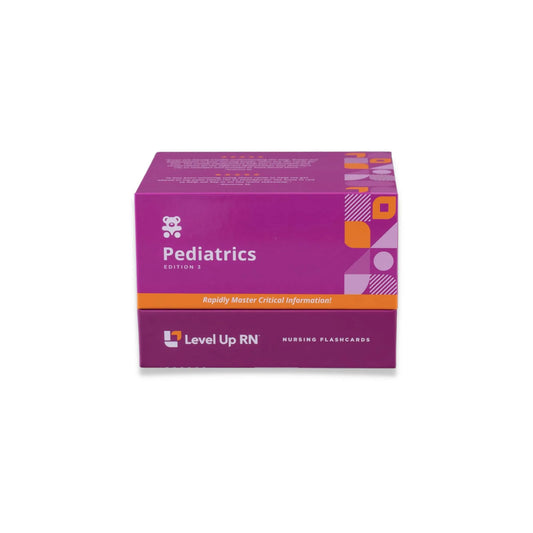Hi, I'm Cathy with Level Up RN. In this video, I will be discussing pheochromocytoma. And at the end of the video, I'm going to give you guys a little quiz to test your knowledge of some of the key points I'll be covering. So definitely stay tuned for that. And this will be the last endocrine disorder that I'll be covering in our pediatric nursing flashcards. So if you have our flashcards, definitely pull out your card on pheochromocytoma and follow along with me.
Pheochromocytoma is a disorder caused by a tumor, which is typically noncancerous in the adrenal medulla that causes hypersecretion of catecholamines, such as epinephrine and norepinephrine. These hormones are responsible for the fight-or-flight response in the sympathetic nervous system. And with excess release of these hormones, the patient will end up with symptoms such as tachycardia, hypertension, diaphoresis, headache, and shortness of breath.
Tests used to diagnose this condition include a 24-hour urine test, which checks for the presence of catecholamines as well as chemicals that result from the breakdown of catecholamines, such as metanephrine. If levels of these chemicals are high, then that would be indicative of the presence of pheochromocytoma. A clonidine suppression test can also be performed. So with this test, clonidine, which is a centrally acting alpha-2 agonist, is administered to the patient, and it should suppress the release of catecholamines. However, in a patient with pheochromocytoma, the tumor in their adrenal medulla has gone rogue, and clonidine will not suppress the release of catecholamines. And then finally, in terms of diagnosis, a CT or MRI can be used to locate the tumor in the adrenal gland.
Treatment of pheochromocytoma includes surgical removal of the tumor or surgical removal of the adrenal gland, which is an adrenalectomy. Until the patient can have this surgery, antihypertensive agents are typically ordered to help manage the patient's blood pressure levels. When caring for a patient with pheochromocytoma, it's important that you not palpate the patient's abdomen because this can trigger a sudden release of catecholamines, which in turn can trigger severe hypertension.
All right. It's quiz time, and I've got three questions for you.
Question number 1. Pheochromocytoma is caused by a tumor that typically forms in the blank.
The answer is the adrenal medulla.
Question number 2. Pheochromocytoma causes excess release of blank in the body.
The answer is catecholamines, such as epinephrine and norepinephrine.
Question number 3. Why should you avoid palpating the abdomen of a patient with pheochromocytoma?
The answer is, it can trigger the sudden release of catecholamines, which in turn can trigger severe hypertension in the patient.
All right. That's it for this video. I hope you found it to be helpful. Take care and good luck with studying.


